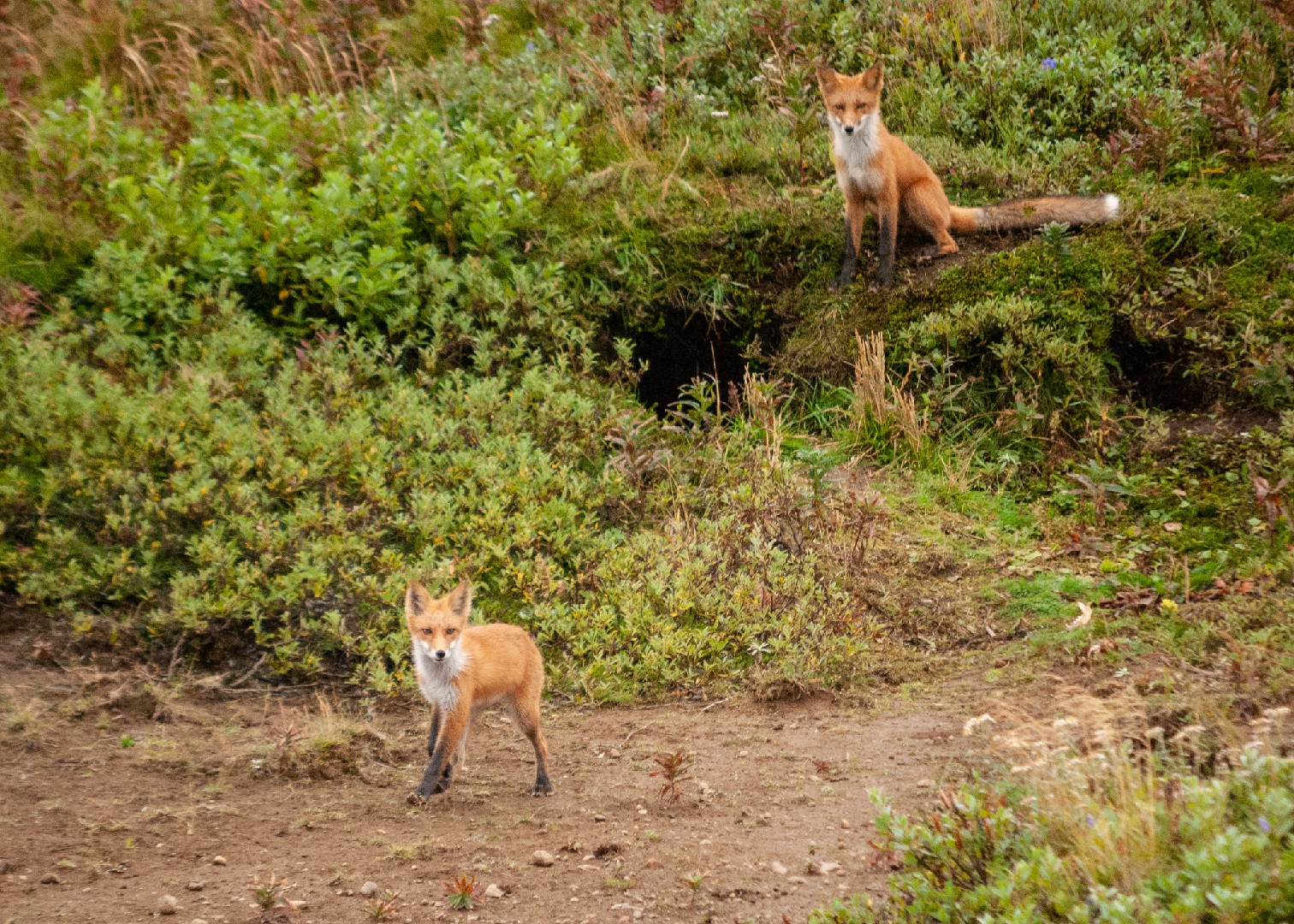Red fox
A species of True foxes, Also known as Kits, American red fox, Arabian red fox Scientific name : Vulpes vulpes Genus : True foxes
Red fox, A species of True foxes
Also known as:
Kits, American red fox, Arabian red fox
Scientific name: Vulpes vulpes
Genus: True foxes
Content
Description People often ask General Info
 Photo By Gordon Leggett , used under CC-BY-SA-4.0 /Cropped and compressed from original
Photo By Gordon Leggett , used under CC-BY-SA-4.0 /Cropped and compressed from original Description
Red fox has a long history of association with humans, having been extensively hunted as a pest and furbearer for many centuries, as well as being represented in human folklore and mythology. 
People often ask
General Info
Lifespan
2-12 years
Diet
Red fox has a highly varied omnivorous diet, but small mammals form the bulk. They consume rabbits, rodents, birds, insects, and a variety of fruits. Red fox can also participate in scavenging behavior, utilizing human waste as a food source.
AdultSize
On average, adults measure 35 - 50 cm high at the shoulder and 45 - 90 cm in body length with tails measuring 30 - 55 cm
Appearance
Like the Turkmenian fox, red fox has a primitive, infantile skull compared to those of its northern cousins. It is smaller than the Afghan red and hill foxes, and never exhibits a red phase in its winter coat, nor the silvery, hoary phase of the Afghan red fox. It closely resembles the unrelated Bengal fox in size, but is distinguished by its longer tail and hind feet.
Behavior
Social and territorial behaviour: Red foxes are usually together in pairs or small groups consisting of families, such as a mated pair and their young, or a male with several females having kinship ties. The young of the mated pair remain with their parents to assist in caring for new kits.
Red foxes either establish stable home ranges within particular areas or are itinerant with no fixed abode. Urine is also used to mark empty cache sites, used to store found food, as reminders not to waste time investigating them.
Red foxes may leave their families once they reach adulthood if the chances of winning a territory of their own are high. If not, they will stay with their parents, at the cost of postponing their own reproduction.
Reproduction behavior: Red foxes reproduce once a year in spring. Two months prior to oestrus. The vixen's oestrus period lasts three weeks, often in burrows. The gestation period lasts 49–58 days. Though foxes are largely monogamous, DNA evidence from one population indicated large levels of polygyny, incest and mixed paternity litters.
The average litter size consists of four to six kits, though litters of up to 13 kits have occurred. Large litters are typical in areas where fox mortality is high. Kits are born blind, deaf and toothless, with dark brown fluffy fur. At birth, they are short-legged, large-headed and have broad chests. Mothers remain with the kits for 2–3 weeks, as they are unable to thermoregulate. During this period, the fathers or barren vixens feed the mothers. Vixens are very protective of their kits, and have been known to even fight off terriers in their defence.
They reach adult proportions at the age of 6–7 months. Some vixens may reach sexual maturity at the age of 9–10 months, thus bearing their first litters at one year of age. In captivity, their longevity can be as long as 15 years, though in the wild they typically do not survive past 5 years of age.
Population
Stable